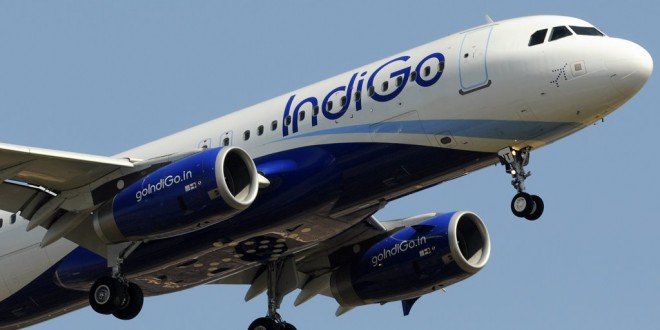India’s largest domestic airline Indigo filed a 557 page draft red herring prospectus (DHRP) which is a preliminary document towards an initial public offering (IPO). For 10% of the company, Indigo is targeting an IPO of approximately $400 million (Rs 2,500 crores), effectively giving the airline a valuation of $4 billion. The funds from the IPO are to be used to fund expansion and also help promoters cash out some equity.
The IPO shows the term sheet on the MOU for the 250 Airbus A320 order, the newest, has expired.
Questions IndiGo IPO investors should ask
The filing is quite comprehensive and for the first time officially brings out several interesting points that were in realm of speculation in the past. In the IPO fever some of these may have been missed but we at Bangalore Aviation felt it prudent and necessary to put forth these questions. These are our initial list (more to follow):
- The DRHP indicates that Indigo’s term sheet with Airbus for purchase of 250 A320neo aircraft has expired.Why would this be the case especially since the memorandum was signed in Oct 2014? Will IndiGo be able to receive the same commercial and delivery terms as per the original memorandum of understanding?
- Dividend payouts for 2011, 2013 and 2014 add up to a whopping Rs. 2,457 crores, almost the same value as the IPO. Additional payouts have been declared for 2015 and 2016 as well. What is the rationale behind these large dividends when capital markets are being approached for additional funds?
- The valuation of US$ 4 billion is against fiscal 2014 earnings of US$ 170 mio – 190 mio (using independent estimates using various scenarios). This gives a valuation as an earnings multiple, in the range of 19x – 21x. How does Indigo justify such a large multiple?
- IndiGo stresses its single aircraft type fleet model as core to its low costs and profitability. Many airports in India cannot accommodate jet aircraft. What is IndiGo;s strategy to serve these towns and cities?
- Route development and network strategy requires a careful think. As the domestic market saturates, Indigo will be forced to take up more international routes, where, arguably, they have had limited success compared to the domestic market.
- With entrance of new domestic airlines, and a resurgence of SpiceJet, domestic yields could be under pressure. What is Indigo’s strategy to address this?
- The operating leases are off-balance sheet transactions, and the sale and leaseback income has not been reported separately. More clarity is required. Would Indigo care to comment on this?
Indigo’s cost advantage remains but may erode going forward
As has been highlighted multiple times, the filing clearly states that the large aircraft orders by Indigo helped it negotiate extremely favourable terms with Airbus and with engine manufacturers and maintenance providers. A comparison of the cost per available seat kilometre (CASK) excluding fuel indicates that Indigo is well positioned with a CASK of 2.87 which is the lowest amongst Indian carriers (Go is 3.00; SpiceJet 3.74; Jet 5.82; Air India 6.35). However, global LCCs such as Ryanair and Air Asia Malaysia have a lower CASK than Indigo (2.54, 2.68 respectively). While CASKs will come down with expansion, the Indian industry is witnessing competition like never before and this will likely result in higher wage rates and cost creep. Indigo will have to be prudent about cost discipline more so than in the past.
Aviation talent matters
Aviation talent is a scarce commodity in the country and in 2003-4 (when Indigo’s idea was put on paper) majority of the talent was ex-Air India, ex-Indian Airlines or a handful of other carriers (including Air Sahara and ModiLuft). Often overlooked is how Indigo attracted foreign talent initially and offered up equity in the venture that will be worth a fair bit now. Bruce Ashby (CEO of OneWorld) joined leaving US Airways; Riyaz Peermohammed joined from Emirates and Steve Harfst a naval aviator joined from North American airlines. Together each delivered on building an institution with strong people and processes that continue long after they left and infused it with thinking that had not been seen before in the Indian market.
Outlook
Overall, the airline continues to fly high and a successful IPO will further cement that fact. After the IPO, the airline by virtue of being a public listed company will be held to greater standards of transparency and accountability and managing towards quarterly earnings and stock price. Whether the airline is prepared to do this with current leadership remains to be seen.
 Bangalore Aviation News, Reviews, Analysis and opinions of Indian Aviation
Bangalore Aviation News, Reviews, Analysis and opinions of Indian Aviation





Thanks for the summary. I personally think Indigo’s cost structure will come under pressure eventually. I am very surprised to see a very less % of promoter share sale.